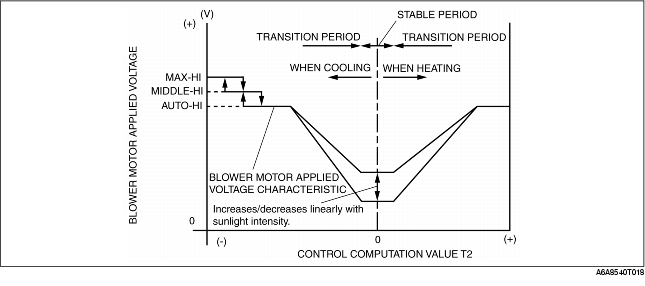|
Fan speed
|
Switch operation
|
Control device
|
Blower motor voltage
|
|
1st
|
Airflow volume automatic control, manual 2nd (-), manual 1st (-) or OFF (+ or -)
|
→manual 1st
|
Power MOS FET
|
4.4 (V)
|
|
2nd
|
Airflow volume automatic control, manual 1st (+), or manual 3rd (-)
|
→manual 2nd
|
Power MOS FET
|
6.1 (V)
|
|
3rd
|
Airflow volume automatic control, manual 2nd (+), or manual 4th (-)
|
→manual 3rd
|
Power MOS FET
|
7.8 (V)
|
|
4th
|
Airflow volume automatic control, manual 3rd (+), or manual 5th (-)
|
→manual 4th
|
Power MOS FET
|
9.5 (V)
|
|
5th
|
Airflow volume automatic control, manual 4th (+), or manual 6th (-)
|
→manual 5th
|
Power MOS FET
|
10.8 (V)
|
|
6th
|
Airflow volume automatic control, manual 5th (+), or manual 7th (-)
|
→manual 6th
|
Power MOS FET
|
12.1 (V)
|
|
7th
|
Airflow volume automatic control, manual 6th (+), or manual 7th (+)
|
→manual 7th
|
Power MOS FET
|
B+
|



